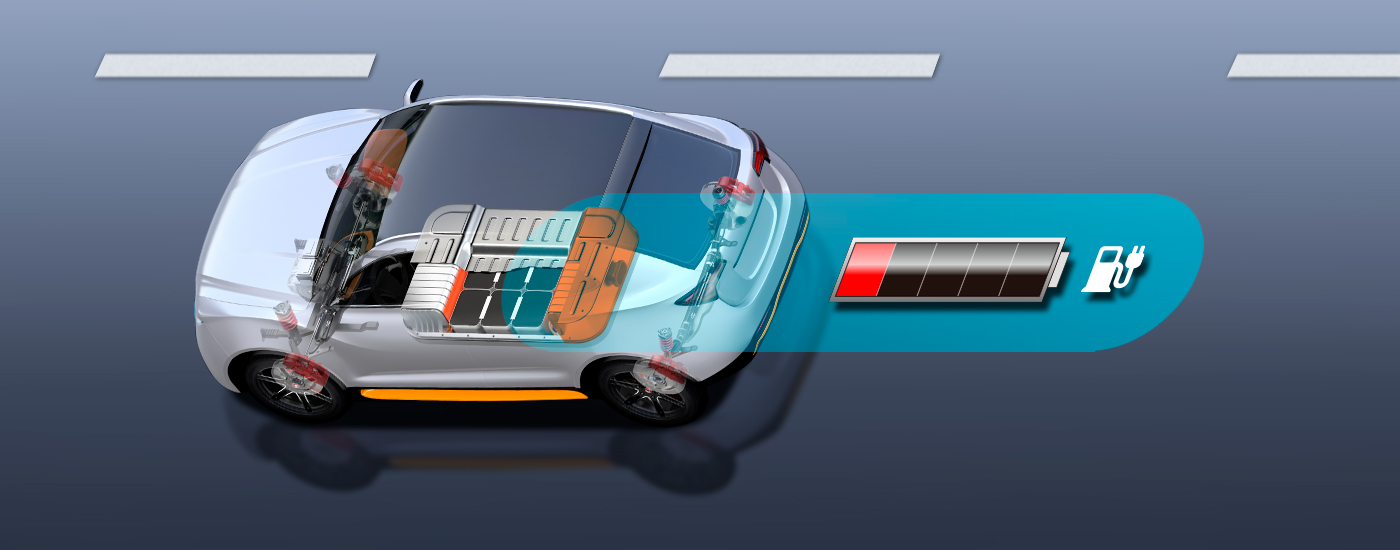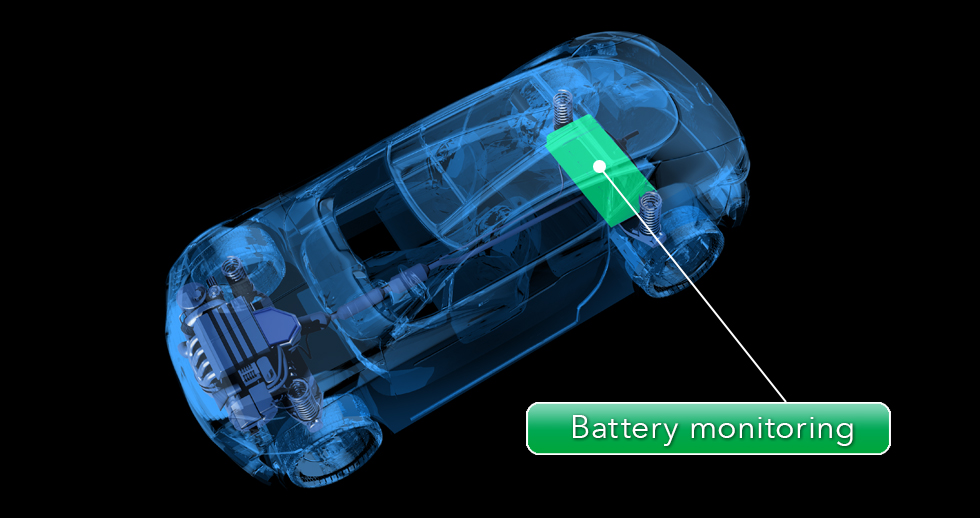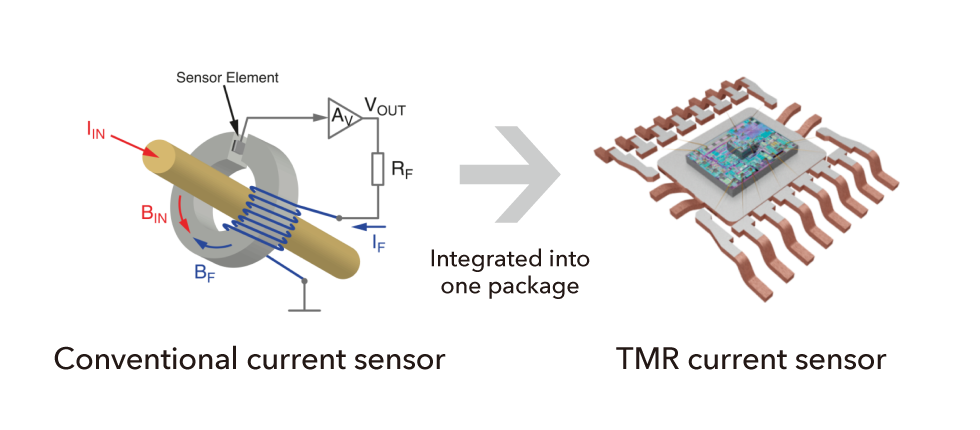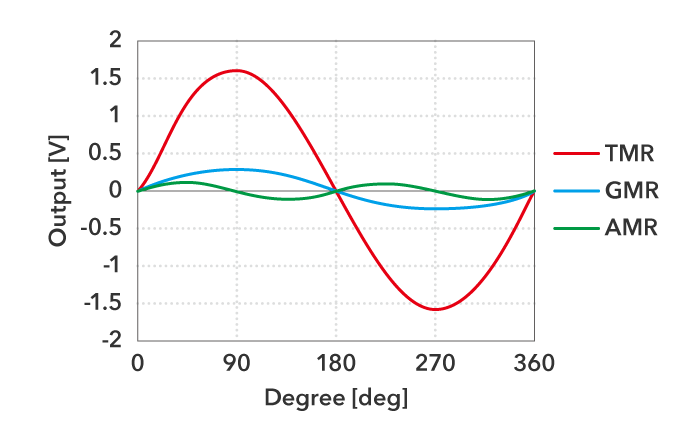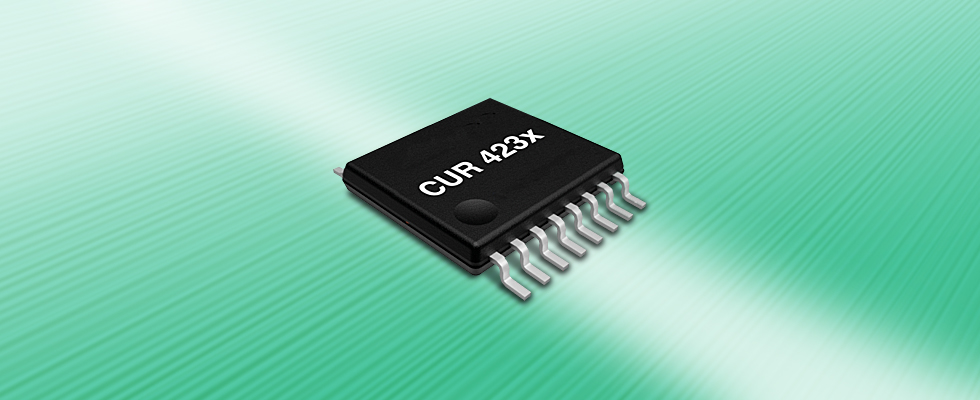A TMR Sensor Solution Providing Ultra-High-Precision Monitoring of an EV Battery
A Challenge of Battery Monitoring that Is Crucial to Avoid “Running out of Electricity”
Naturally, EVs can no longer run when the battery is exhausted. Running out of electricity is most critical if it occurs on a highway, which can cause a serious accident that endangers the lives of many people as well as major traffic jams. To avoid this, automakers and transportation infrastructure companies offer services, including showing precise battery consumption estimates to drivers and providing information about service and parking areas where they can charge the battery. These efforts will further increase as EVs spread and the electricity supply infrastructure develops in the future.
What is important in estimating battery consumption is high-precision battery monitoring. Without a highly precise measurement of remaining battery capacity, reliable information on the remaining distance that can be travelled will be hard to determine. Moreover, enhancing the precision of battery monitoring not only enables the ability to check the charge and discharge condition of the battery, which is related to the remaining battery capacity, but also prevents conditions that deteriorate the battery cell, thereby contributing to increased battery life.
A Battery Monitoring Solution Detects a Large Current of up to 1200 A with an Error of Less than 1%
Among various types of current sensors used for battery monitoring*1, a typical measuring method is a type called a closed loop. Closed-loop current sensors have a large core comprised of a coil to generate magnetic flux for sensing. This has posed challenges so far, such as compromised flexibility in battery monitoring design and an inability to reduce vehicle weight.
These challenges have been solved by a new closed-loop tunnel magnetoresistance (TMR)*2 current sensor developed by TDK, wherein a coreless sensor is used. The TMR current sensor, into which the magnetism detecting section (consisting of a TMR element, coil, and resistor) and the application specific integrated circuit (ASIC)*3 are integrated as one package, is able to measure a large current of up to 1200 A with high-precision, with an error as small as less than 1% (full scale) in a non-contact manner. In addition, its small size and low power consumption can contribute to realizing unprecedentedly high-precision battery monitoring.
This new TMR current sensor was developed by exploiting the comprehensive strength of the TDK group, primarily by combining TMR element technology and the magnetic sensor design technique of TDK-Micronas. The TMR current sensor (product name: CUR 423x) will support high-precision battery monitoring and contribute further to the spread of EVs.
The CUR 423x is a contactless magnetic-field sensor for high DC and AC current measurements in automotive and industrial applications. It is the first Micronas brand product developed by leveraging the TDK TMR technology. For detailed information, please visit Product Center.
Terminology
- Types of current sensors: There are various types including “the shunt resistor type” in which a current value is obtained by passing an electric current through a resistor with a small value of resistance and measuring the voltage between both ends, and the “closed-loop type” in which a feedback current is passed through the second winding so that the magnetic field generated by the input current will be constantly zero.
- TMR(tunnel magnetoresistance)is a phenomenon in which magnetism changes the tunneling current through the insulator film; elements to which this mechanism is applied can have higher reluctivity, which shows sensitivity, and can read high-density signals more accurately than conventional ones.
- ASIC (application specific integrated circuit) refers to an integrated circuit designed for a specific application such as signal processing, in which circuits of multiple functions are integrated.
Related links
Product inquiries by email
